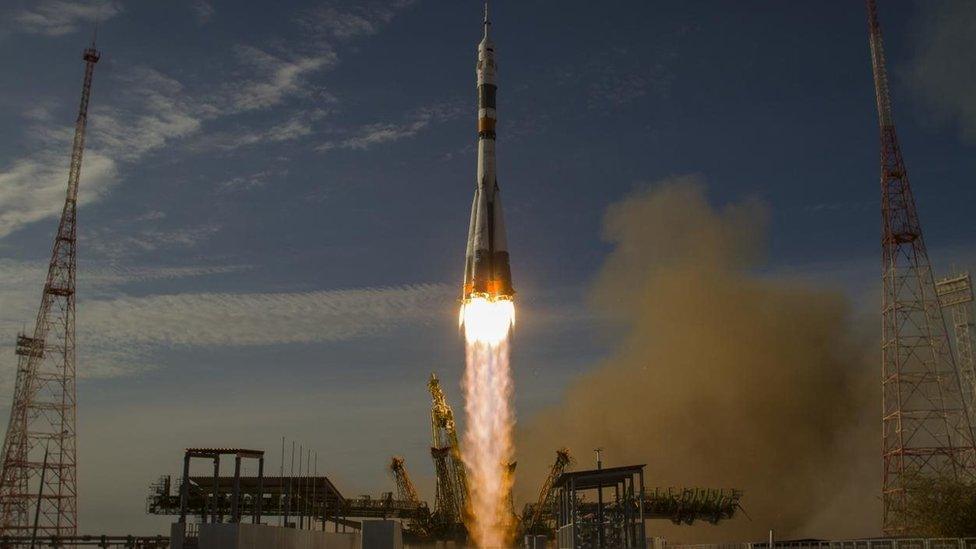Nasa's all-electric and supersonic planes aiming to take flight
- Published
- comments

Not only has Nasa been busy announcing its space projects for the year ahead, but has updated us on progress of its projects for use here on Earth.
Due to its space adventures, Nasa is involved in some pretty hi-tech engineering designing kit for rockets, satellites and space stations but it also works with other companies on similar design breakthroughs.
Two of the many areas it works in are making electric planes a more common reality and building supersonic aircraft to make journeys faster.
The electric X-57
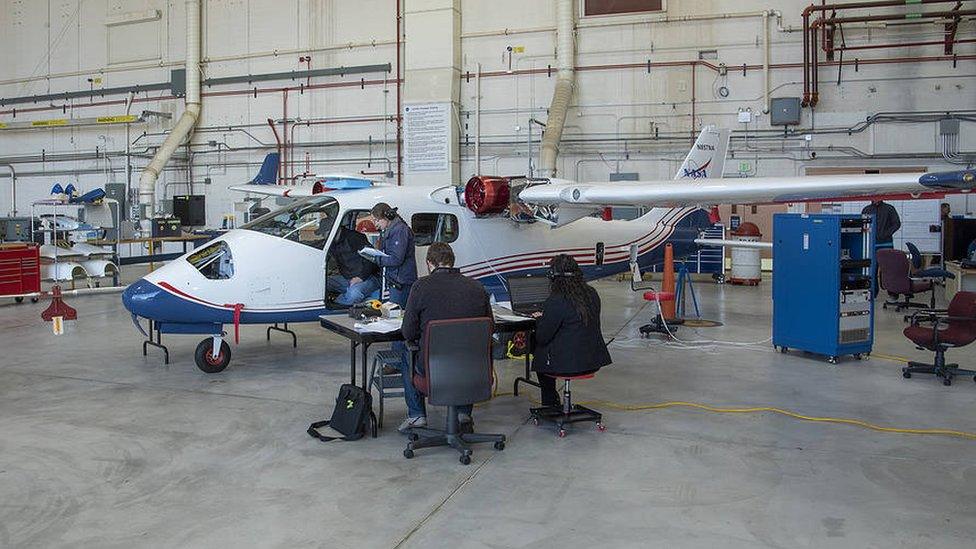
Operations crew at Nasa's Armstrong Flight Research Center records telemetry results during ground testing last year
The X-57 Maxwell is Nasa's first all-electric plane. With 14 electric motors and propellers its aim is to demonstrate that electric power can make planes quieter, more efficient and more environmentally friendly.
It's hoped this science can help develop standards for other electric aircraft makers.
In development since 2015, the X-57 has underdone a series of tests and modifications.
The design is aiming to reach the goal of zero carbon emissions in flight and show what can be achieved in commercial flight, just like the planes we use to fly on holiday.
Cruise Speed - 172 mph
14 motors and propellers
Weight - 1.3 tonnes
Maximum Altitude - 14,000 feet
Electric power provides not only a huge reduction in greenhouse gas emissions, but since the X-57 will be battery-powered, it can run off renewable based electricity, making it more environmentally friendly and cheaper to operate.
Just like the research that has been done with electric cars, once the X-57 is tested in flight - which NASA hopes will happen this year - the results will help pave the way for all-electric flight in the future.
And it doesn't stop there!
The X-59: Going supersonic
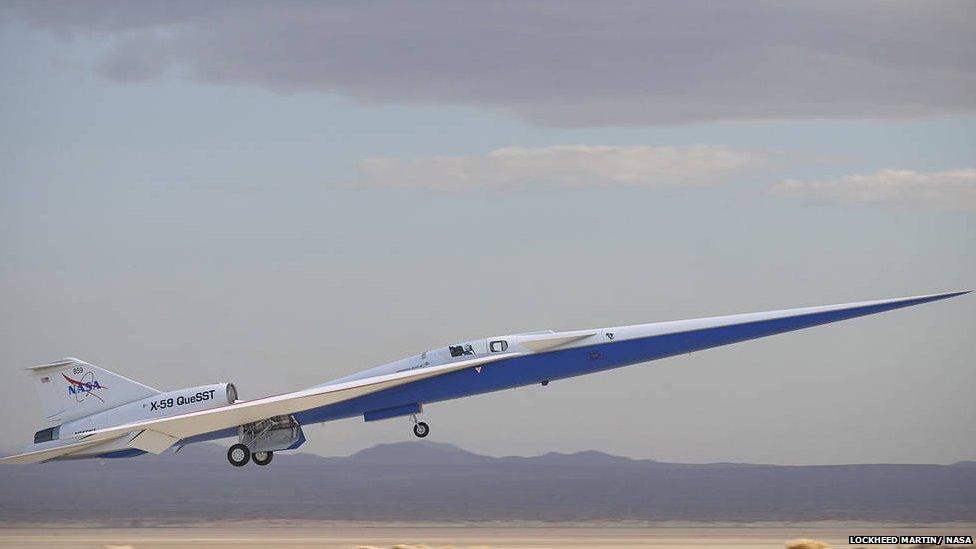
Check this out - Nasa's aircraft development is also seeing them continue the build and final testing of its supersonic aircraft, the X-59 QUESST.
The X-59 Quiet SuperSonic Technology X-Plane is designed to fly faster than the speed of sound without producing sonic booms - the loud bangs you hear when a plane is travelling quicker than sound can travel.
Supersonic planes - like Concorde - are not permitted to fly over land at supersonic speed, because of the noise they would make.
X-59's design will perform within expected aircraft noise limits. Currently the aircraft is under assembly and will eventually be tested over several US cities.
For the time being all its testing has in simulations. These simulations have produced a large database for all possible combinations of the settings that a pilot uses to control the aircraft, and the flight conditions that may be encountered during flight.
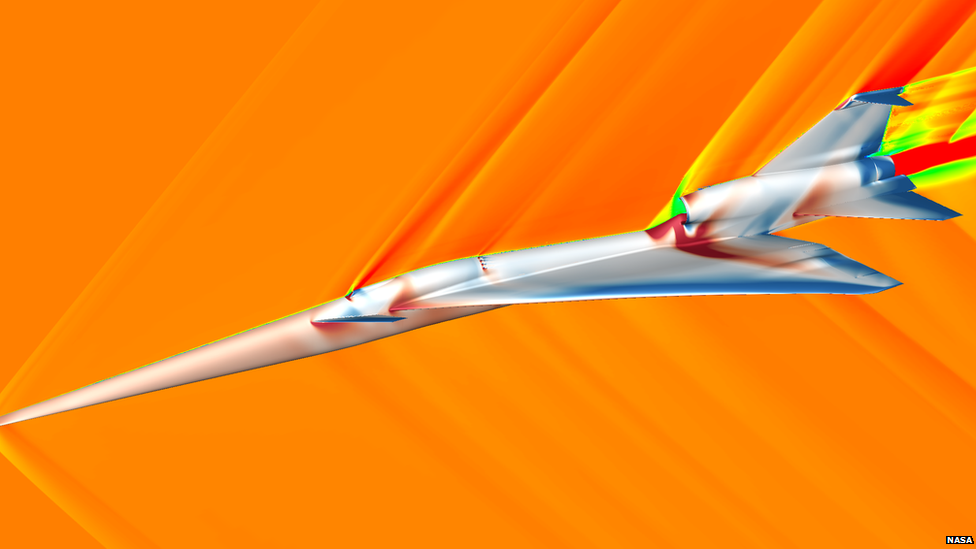
This image captures a moment from a 'computational fluid dynamics simulation' of the X-59 aircraft during supersonic flight - basically a test run done on a computer.
The colours shown on the aircraft indicate surface pressure, with lower pressures in blue and higher pressures in red. This allows researchers to work out which parts of the aircraft are most likely to causes shockwaves, which create the sonic boom noises.
And when the time comes to flight test it, aircraft technicians are optimistic!
Nasa plans for the X-59's assembly to wrap up and major ground testing to begin this summer, leading to a target date for first flight in summer 2022.
We'll be looking out for it!
- Published20 June 2016

- Published11 March 2019
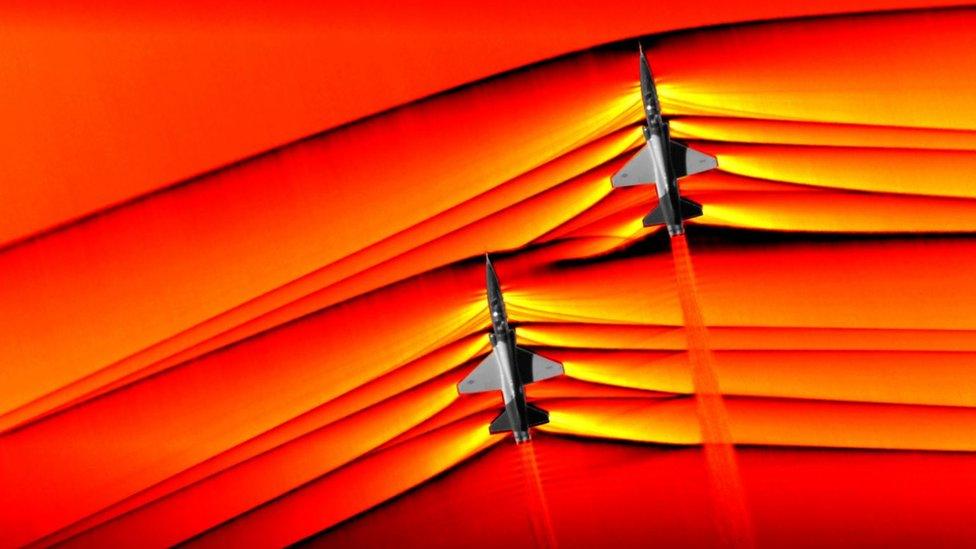
- Published6 January 2021
